How to Avoid Diamond Switching Scams by Bad Jewelers
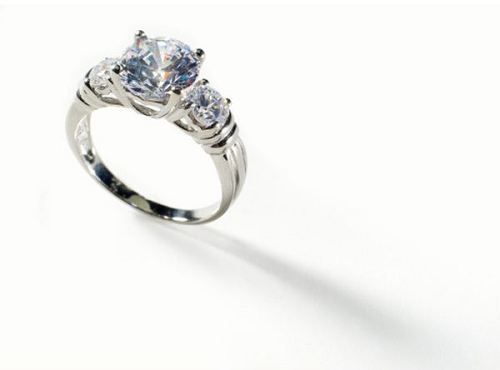
Casting a shadow of doubt over your jeweler’s integrity?
Whether you are buying jewelry for an anniversary gift or an engagement proposal, how do you protect yourself from diamond switching scams and ensure that you are receiving the correct goods at the point of sale?
The same goes for bringing your jewelry for a routine cleaning or maintenance checks at your local retailer. What are the things you can do to prevent diamond swapping and ensure the safety of your jewelry in the salesperson’s hands?
In this article, I’m going to show you what to look out for and guidelines to protect yourself when dealing with a jeweler; especially one that you aren’t familiar with yet.
First of All, When Does Diamond Switching Occur?
In most cases, diamond switching occurs when you leave your diamond unattended with an unethical sales associate or a jeweler without taking proper precautions.
Did you know that a high valued diamond can be swapped out in less time it takes for a simple cleaning routine? Usually, diamonds are swapped with high quality CZ stones because they look identical to the real thing to the untrained eyes.
Some scams are so good that most victims don’t detect anything suspicious until months or years later. And by that time, it is too late to make any accusations or get any recourse!
In fact, once you walk out of the store without checking or doing your due diligence, the jeweler will have complete deniability.
The Classic Bait And Switch Scam
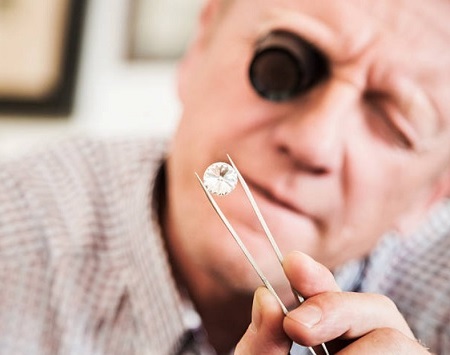
One other common scam is the bait and switch that deceptive jewelers use to con unsuspecting shoppers.
What happens here is that the jeweler would attempt to show you a great looking diamond and make you think it is the stone you are getting. Once you decide to buy it, they switch out the ring to a lesser quality one without your knowledge.
A loose diamond can be switched right after you picked it out and when it is to be mounted onto a setting. For example, you may be required to leave the stone overnight or over a period of days with the jeweler for them to complete their work.
With more time to work with the stone, it’s easier for unscrupulous jewelers to make the switch.
Most Jewelers Don’t Want Your Stone Anyway…
I would say that the majority of jewelers in the industry are trustworthy and won’t risk jeopardizing their reputation for a small gain. Even for a diamond that is valued at $50,000, it doesn’t make good business sense to commit a crime for such a small amount of money.
The thing is, honest mistakes may sometimes occur in the workshop. For example, when a piece of jewelry is brought in for a repair or a change of setting, there can be genuine cases of mix-ups in the workshop.
In order to prevent such an issue and any misunderstandings from occurring, you should always request the jeweler to plot your diamond on a receipt before leaving it in their hands.
Basically, this involves the jeweler mapping out the locations and types of inclusions clearly on a piece of paper. A copy of this plot is then kept by both you and the jeweler for identification purposes when you return for collection.
If your diamond has a grading report and laser inscription number, this process will be very straightforward.
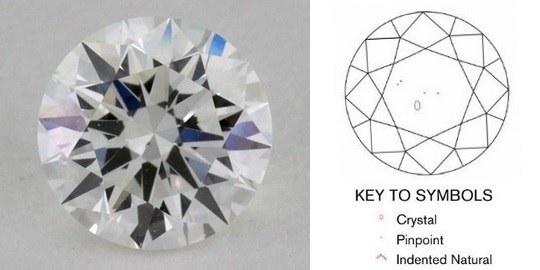
A receipt with the plotted diagram helps protect both parties involved.
If the person-in-charge refuses to plot the diagrams or don’t want to take responsibility for the ring, simply take your business to another jeweler who does. There’s no point in exposing your jewelry to any unnecessary risks.
What to Look Out For When Buying in a Physical Store?
We live in the age of Internet technology and it is easy to get information about a jeweler’s reputation at the click of a few mouse buttons.
This is your “first line of defense”. If there had been any scams or concerns raised by previous customers, this information will most likely be documented on sites like the Better Business Bureau or the Federal Trade Commission.
Next, jewelers should be willing to provide information like grading reports and have the necessary equipment for you to verify the diamond prior to completing a sales transaction. If they refuse to do this or make excuses, this is a huge red flag that tells you something is amiss.
Also, you should be extremely wary of businesses that require cash payments upfront without any form of written guarantees. My advice is not to take such risks because it is very difficult to track cash payments. Instead, you might want to consider using a credit card for payment as it leaves a paper trail and offers some degree of consumer protection.
Knowing Your Diamond Inside Out Helps!
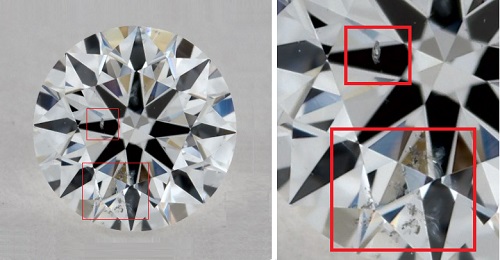
Inclusions are like fingerprints and they are unique in every diamond.
Did you know professional appraisers can take up to a few hours to grade and appraise the value of a diamond depending on their experience and the nature of the jewelry? If their examination process can be so detailed and thorough, yours should be as well.
When you are faced with the scenario of leaving your diamond unattended for routine cleaning or re-sizing work, make sure you view your diamond through a loupe. Check for details like unique inclusions or marks on your diamond.
You can use the reference list here to help you identify your diamond’s inclusions.
Make a note of this and let the other party re-confirm the details you had seen before coming to a common agreement. This will let the other party know that you are paying attention to every detail and serves as a caution for them not to mess around.
If there is a laser inscription on the diamond, make it known to the other party too. It can be used as a quick and easy way of identifying the diamond.
Before you leave the shop with your jewelry, make sure you re-verify the details during the pickup. If you notice that something is off, make sure you raise any disputes immediately.
Stay Vigilant, It Never Hurts to be Cautious
With all that said, diamond switching scams don’t happen as frequently as you think they might. When it does occur, it is because the unwary customer didn’t use common sense when choosing a jeweler.
Hopefully, you will keep these tips in mind when you are shopping for your jewelry or taking them for a servicing job. Remember, having proper documentation will help avoid unnecessary trouble in the event of a dispute.
Related Articles
Leave A Comment

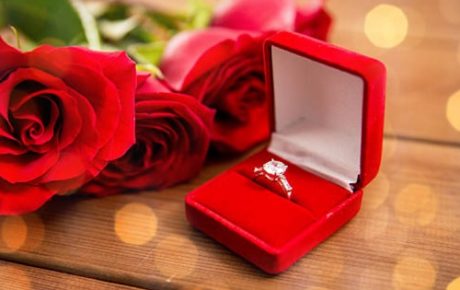
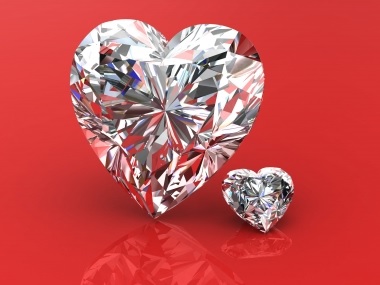
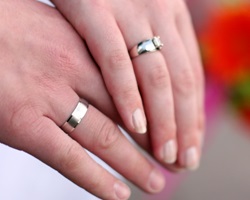
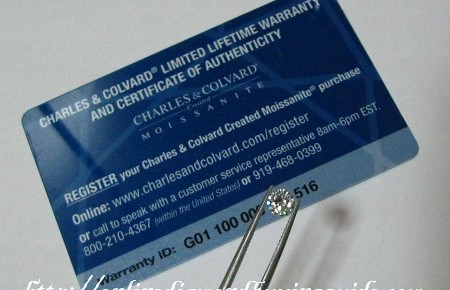









46 Comments
Dishonest jewelers can also run elaborate scams to misrepresent their diamonds through the use of in-house appraisals or try to tell you how bad your purchase is in the hope that you buy from them instead. These are things that we all need to pay attention to.
Thank you for writing this piece of information and sharing it with everyone. I found it very useful as a person who is researching into the world of buying diamonds. I guess the whole takeaway from this article is to be educated and never be afraid to ask questions when you have doubts. This section here is a great place to start reading up if you are new.
One of my friends had a huge problem with a dishonest jeweler in our local town. She went to the jeweler to get her diamond re-set into a new halo ring design. Apparently, after the setting was done, checks were made against the stone and it didn’t tally against the diamond specified in the grading report she had.
Her previous stone had a GIA inscription number which could no longer be found on the stone and she realized this only a few months later. When she confronted the jeweler, the blame pushing started and of course, she couldn’t do anything about it since the incident had already happened 2 months ago.
My mother’s wedding ring diamond was a 2 carat beautiful stone. She took it to get it reset and didn’t check it out properly after. Fast forward 20 years to when I go to redesign it…only for a $3 cubic zirconia to fall out and no way to get any sort of justice…be very vigilant guys
Very essential blog post! So often we purchase diamonds during various occasions but we don’t know how to verify whether the diamond we’re purchasing are genuine or fake. So after reading this post suggestions I’ve learned quite valuable knowledge regarding diamond.
Should I be concerned wtih leaving a 3 carat diamon at GIA to get certified? I am NOT mailing it as they suggest. I’m still worried, this is my grandmothers piece and I would be HEARTbroken if anything were to happen to it.
You will be fine if you leave it at GIA. Believe it or not, 3 carats is no big deal compared to the diamonds they handle on a daily basis. The process is secure and highly reliable as they have many monitoring systems set up across every stage of the grading.
We have just had our ring switched at a jewelers in Spain. My wife is heart broken and in tears. We had only just got the ring of a friend but the diamond was loose. We took it to be fixed and the man checked it with his eye glass and test meter for maybe a min. He said it was a very nice ring and he would give us a 1000 Euro for it now. We said no and he said it would be a week to fix it.
When we got it back I asked him to check it with his meter but he said it was broken. I was a little sucpicious so I asked him if he would still give us 1000 Euro. He said he would but he would have to check it first – but he had all ready checked it a week ago.
I was getting bad vibes and we left and went to another jewelers.
He said it was categoricaly NOT a diamond and the ring was not hall marked!
My wife had noticed the fit and feel colour and weight of gold of the ring was different and it had scatches and chips on it.
We went back to the jewelers and confronted him with THIS IS NOT our ring. He then went into ramblings about the chips being because he squeezed the mounting and the colour was wrong
because he had cleaned it in acid. When I pressed him to come round our side of the counter and check it with his glass he agreed in 5 seconds it was not diamond !
We now go to the police to make a document….
My fiancé, mom, and brother flew out to visit me here in Vilnius, Lithuania. My mom brought a ring that her and my fiancé purchased in my hometown (he was flying in from Japan–we’re both military). About a week after he proposed and left, a little stone in the halo fell out. I’m so scared to get it fixed. The diamond isn’t HUGE but it’s near perfect. It’s 1.26k pear shape surrounded by .5 karats of halo stones. I’m so scared to get it fixed out here. I have the paperwork that verifies the worth of the stone and the inclusions. Vilnius is also a big city but few jewelers. Just mall jewelry stores. Any advice? Do you know of any reputable jewelers near me?
I don’t have anyone I can refer to you for repairs at Vilnius. Anyway, getting the ring fixed is a fairly easy job and most jewelers should be able to do it without much issues. Ask around and talk to the jewelers for their assessment.
I am also concerned about diamond swapping and when I had to put mine, I honestly told the jewerer that the process makes me very anxious, that this is my problem, not his, but that I respectfully request for him to do it in front of me. He agreed. I paid him generously and appologized and thanked him many times but all in alli feel that’s the only acceptable way at least for me. I do not have to blindly trust people, be they professionals, with pretty expensive things, like my precious stone. Do you think that requesting he does the mounting in my precense was over the top? I was respectful and polite and explained that this was my problem, not his, and he didn’t seem to take offense.
Diane, it’s a common issue that consumers have when having someone else work on an expensive diamond. Most jewelers won’t take offense to mount it in front of the consumer if time/schedule permits. It’s just part and parcel of being a jeweler in the business. So, no worries there.
Hi Paul, I would like to know whether it is possible to fake a GIA laser inscription on the diamond. I recently bought a 1.6 D IF diamond from the Antwerp diamond district for 60% of the price that is indicated on the Rapaport Diamond Prices and am concerned that the diamond is a fake. The diamond inscription, however, seems to match with the website. Thank you very much!
It is possible to fake an inscription but here’s one thing you need to understand, reliable vendors won’t do that.
Now, as for using Rappaport report to sell diamonds, that’s a yellow flag and is a tactic frequently used to rip consumers off.
https://beyond4cs.com/diamond-prices/
Thank you for all this helpful information Paul! And thank you for helping me avoid a very costly mistake by teaching people like us about how jewelers are switching out diamonds :)
I just purchased a forever mark diamond and left without knowing the diamond number. I went back a few days later to get the documentation paperwork, etc…with the serial number. How do I know the diamond I saw and bought has the same serial number of the documentation I received. The documentation has all the correct 4Cs but the only link between my receipt and the documentation is via a sticker with no date and no link to the documentation. The store is family owned and been in business for 20+ years. Should I be concerned?
I would be concerned. And why on earth would you even make the purchase in this manner to begin with? It’s absolutely foolish.
https://beyond4cs.com/buying-diamonds-blind/
To be sure, I can tell you outright that there’s no way for me to know or for you to find out.
If one needs to wear something pretty in public, a CZ will work just as well. It all depends upon who’s wearing it.
You are absolutely right. For diamond alternatives, CZ are the best and cheapest gemstones that are somewhat comparable to diamonds in terms of appearances.
Paul, I have a diamond that I purchased in 1996 that has an AGS number assigned to it. I need to take the diamond in for an appraisal for insurance purposes. In previous comments, you noted a “GIA laser inscription” — is this something I could request to be done by the appraising shop to better protect the diamond going forward? Any thoughts on that general cost? I’m nervous to leave it for the appraisal, but seems it must be done and the best defense will be to pick the appraising shop based on reputation and not price (in Knoxville, TN). How common is it for a jeweler or appraiser to steal the diamonds when it is away from a consumer?
You could get the laser inscription done for $20-$30. It’s a relatively easy request as long as the appraiser has the laser machine. Anyway, I think your fears are a little overblown. The fact is, most appraisers don’t want your diamond or do something funny with it. The risk of “cheating” you for a couple of hundred or thousand dollars is completely not worth the reputation damage. The easiest way to know what you passed to them for the appraisal is to locate a few inclusions in the diamond and know what/where they are. These can’t be changed via laser inscriptions and it helps you to identify the diamond with assurance. Get the person to give you a quick rundown and show you the inclusions via a microoscope in a quick 3-4 minutes sit down. When the job is done, go through the same process again so you know that the stone is yours. As I mentioned, most jewelers don’t want to steal your diamond or exchange it out when you aren’t looking. It’s just foolish to commit a crime and ruin their business.
I bought a GIA laser inscribed diamond and am having a local jeweler mount it on a ring. This jeweler was the only dealer in the area who was authorized as a dealer for this ring so I went with him.
He had asked me the measurements of the diamond before ordering the ring. My fear is that he could possibly created a “copy diamond” and laser inscribed it while the mounting is completed.
Is it normal that a jeweler ask for the precise measurements?? I’m worried about leaving it with him and not getting back the same stone when it is returned to me.
For what’s its worth, nobody in the long term business would be interested in swapping out a diamond and cause reputation damage. If you don’t trust the jeweler, then don’t use them. Travel somewhere further and work with another person. Otherwise, the tips I listed here to avoid scams should address all your concerns.
My cousin had found what appears to be a mounted diamond encircled with smaller diamonds. We both know nothing about determining whether an actual diamond is real, but it was refracting rainbows in natural light. I don’t know what to do next.
For more context, we found this at a nearby gas station floor while cleaning my vehicle. We are guessing someone may have broken the mount off while cleaning. If no one has come looking for their stone, what should we do?
If you want to know what the stone is, bring it to a jeweler and they should be able to identify it for you without any charges.
I was wondering how likely it is for a jeweler to lie about the grade of your diamonds. I purchased a used ring online for a great deal, it had small diamonds all around. I went to a jewlery store to verify that the ring was platinum and that the diamonds were real. He did some testing and confirmed that the ring was platinum and diamonds were real but low quality. This was hard to believe given the ring was supposedly a Tiffany and Co. ring. After the jeweler told me this, I concluded that it was not a real Tiffany ring and returned it. It was unfortunate because I paid half the price of a new “real” one. Would they lie so I purchase one from their store instead?
Jewelers lie because they want to rip uneducated customers like you off for one reason: money. You paid half price for a “real” Tiffany ring and you think you really gotten a deal? It’s not how things work in the industry. The only person that got a deal was the scumbag who misrepresented the ring. There are better places to buy a tiffany setting from and the choice of vendor actually matters.
The worst scam are under appraisals! many jewelers, if they think there is a slim chance of purchasing, will give you an informal appraisal half of what you could sell it yourself for online.
I had an informal, written appraisal done on 20 estate pieces. To avoid suspicion , the jeweler quoted fairly accurate prices for a couple of obvious pieces but then outrageously undervalued remaining jewelry, esp. diamonds. An example: $345. for a Trinity diamond ring I sold myself for $2800. At best, the pieces were appraised for 50-75% less than what “second hand” jewelry would go for. I experienced the same underhanded practices with 3 jewelers. There is no excuse for that kind of greed. The best assurance is a written appraisal that you have to pay for. It can be worth the price.
You hit the nail there. There are plenty of scumbags who sully the reputation of the industry when they try to take advantage of uneducated shoppers. Whether you are selling or buying jewelry, finding a reliable vendor is having half the battle won.
well, here’s a weird one for you. I had my ‘trusted’ jeweler of 30 years send my Kashmir sapphire to a cutter in NYC, to then deliver it to AGL. It was indeed certified a true 2.47 Kashmir. However, when I got it back this week, it’s an entirely different color…darker and not as velvet blue. I took pictures of it before I sent it, but did not map out the scratches or imperfections. It was, however, accurately measured, and weighed etc. and fits that bill. Is is possible the cutter did a CAD, made a ‘copy cat’ and switched it before sending it back?
Well, I have no idea and can’t do any detective work without knowing details. What I will say is, for the jeweler to risk committing a crime over a few dollars is really stupid and short sighted. It’s your words against the jewelers and you should have thought about this issue prior to sending it to a “trusted” jeweler.
This happens more than you think as it is so hard to prove even if you know it after you leave the store. Marks are so little to show a diamond swap and the marks on the band are hard to see, later on you feel the rough spot. It is a real shame that this is what is happening but it is. Everyone knows the look of their ring and it is something you see when you look at the ring in the same way in your car or your own home with the same lighting. Then there is nothing you can do as the crooked person does this as they get away with it easily. They have no fear of their reputation as this is almost impossible to prove.
I understand your concerns and there are a minority of scumbags in the industry that tarnish the overall reputation of jewelers. The thing is, if you can get the jeweler to agree and see (i.e. penning it down in the plot) and verifying the SAME exact inclusions with you on collection, it says alot about them and how they conduct business. If they aren’t willing to do so or simply tell you to “trust” them, then there are better jewelers out there to do business with.
I was handed down a 2 carat diamond ring with a think band that consists of smaller diamonds. I wanted to reset the diamond as a solitaire ring with an infinity diamond band. Is it possible to have the jeweler mount the 2 carat stone in my presence? And as for the smaller diamonds…I’m assuming it’s impossible to have the jeweler make the band in front of me but is there a way to insure the smaller diamonds haven’t been switched out? And what are the things to do if your diamond was switched?
First of all, the small size diamonds or melees are dirt cheap. It doesn’t make sense at all for the jeweler to do a switcheroo for these stones. As for whether you can stay and watch them do the work, it depends on the jeweler and what they can work with. To do what you ask, they must make a setting and probably customize the head of the ring beforehand. The best way for them to do this is to work with a loose diamond. Here’s the thing, if you don’t even trust them to leave your diamond with them, then why are you even considering to use them in the first place? Find someone you trust and these problems would have resolve themselves.
Hello
I recently inherited a beautiful yellow topaz and diamond pendant that was free from inclusions when you looked at it. I took it to a GIA jeweller and when to pick it up today I was shocked to be told it was not topaz but lemon quartz and that it now had three very large inclusions that were immediately visible to the eye and each originated at a claw and ran to another claw. I am so upset as I just got this from my dear 91 year old Aunt who just passed away 2 months ago. She inherited it from a longtime family friend more than 40 years ago.
What do I do and should I be concerned that jeweller removed my stone and replaced with a quartz. I also feel the colour of this stone is much lighter, almost clear while the stone I took in was definitely a beautiful pale yellow.
I am heartbroken.
What exactly happened during the examination process. Was it out of your sight for a long time? My suspicion is that you didn’t have a yellow topaz in the ring to begin with. Why? These gemstones are not expensive and why would the jeweler want to swap out that stone.
I brought an engagement ring and wedding band to local jeweler to ask what the size was. He measured and stated approx 2.50 carat diamond and .20 pt stones around with 4 on engagement ring and 8 on wedding band totalling around 4 carats. setting is platinum. also when I came back after his diamond guy looked at it, the finish on the setting is dull, why and only worth 3200.00 he said diamond is great except color around K or L. Never Never leave your rings
If you brought the ring to a jeweler to measure the ring’s size, this can easily be performed in 15 seconds using a mandrel where the ring slides onto it. How likely would they be able to swap or exchange out the ring with a like-for-like design with similar diamond size to your ring? And did you raise questions at that point in time when you suspect your ring was tampered with?
I bought a diamond engagement ring from James Allen. My fiancé and I recently went to our local jeweler, highly recommended, to have it resized to fit her better. He looked at the ring and asked “where did you buy this”? I told him James Allen. He immediately used his loupe and said ”is this supposed to be real”?
I was stunned and said yes, I have an IGI certificate and an appraisal that came with it.
He walked to the back and brought out a probe and pressed it against the diamond. It beeped and a red light came on. He said “that means this is moissenite”. I didn’t know what to say, and my fiancé was standing there with me, in shock.
He asked if I had a receipt, so I showed him the original email with the receipt. He said “if that’s how much you want to spend I can make it for you with a real diamond”. I asked what I should do about this one. He told me I could try to return it. Then he said “don’t get mad at me, I’m just the messenger”.
My fiancé and I were just completely caught off guard do we left and I told him I would be in touch.
The next day I went to a larger jewelry store in a bigger city and the tested everything and assured me the diamonds were real.
This guy was the most respected jeweler in our area, and he either lied to us, making me look stupid or dishonest in front of my fiancé; or he is terrible at his job but so sure of himself that he gave me wrong information. Either way I plan on telling this story to everyone that will listen for years to come.
Rest assured that EVERY single piece of jewelry purchased at James Allen or reputable online retailers is real. This is something that they take seriously and I have never received a single complaint about readers and customers receiving the wrong items. If what the first jeweler said was real, you can be sure that James Allen or Blue Nile would have been sued out of business a long time ago. There’s a reason why they are still around and that’s because they don’t jerk clients around and have a reputation to protect. If you want to get your newly purchased jewelry checked out, do it at a legit 3rd party appraiser where there is no conflict of interests.
I like that you mentioned inclusions. It is new to me that the several flaws of a gem can be an instant identifier for diamonds. My mother wants to sell her old necklace to a custom jewelry design shop. It is comforting to know that the pawners can spot the blemishes on the gem to vouch for its authenticity.
This is good education, and thank you Paul for going above and beyond in your comments here. I am purchasing a Blue Nile diamond 1.55 E VS1 diamond after a bad experience with a “major” box store. I returned the ring which was terrible as it had visible black carbon inclusions after I paid almost $10k for it. At the time I knew nothing about diamonds and saw the in house certification with some grading numbers and figured it has to be good. A buddy of mine woke me up with a quick “education” into the world of diamonds and I now consider myself an at home expert. I ended up spending more but the Blue Nile diamond is almost flawless and it is what I paid for, plus I have the GIA report. I am worried about the cleanings and other repairs that will come in the future, so this subject we are all talking about rings to my ears. I know this is a year after the last post but it is an important subject to those that spend a good amount of money on a diamond ring. Anything with a price tag these days is subject to some type of scam so honest consumers like those of us here need to be aware of what can happen and take the steps necessary to avoid being ripped off!
This is a common concern that I get from readers and a valid one. For general cleaning, you don’t need the jeweler to do it for you when you can do it in under 5 mins and be able to do a better job. Even if you bought a diamond ring from a local retailer, it just doesn’t make sense, economically and practically, to bring the ring down to the jeweler every time it gets dirty.
You can follow the cleaning guide here to perform easy maintenance: https://beyond4cs.com/care-and-maintenance/how-to-clean-your-diamond/
As for repairs, how realistic would it be for you to get the ring repaired in 5 years? If you think you are going to need repairs every 3 months, then the local jeweler would be the way to go. But if this is you, then the problem actually lies in how you wear the ring and not the vendor. Most people require minimal repairs or resizing and even so. I estimate this to be once every few years. Even so, it’s not that hard to send the ring back by post for the online retailer to service the ring for you. It’s just going to cost you the postal fees and a little hassle. Again, I want to stress that most people don’t require repairs or service rings on a regular monthly or yearly basis.
I appreciate that you explained working with jewelers that have information to specific diamonds, like a grading system. My girlfriend and I are planning on getting engaged this month and I want to get her a nice ring that she approves of. We’ll have to keep these tips in mind as we go shopping this weekend for a ring.
Every jeweller we approached in Antwerp had not heard do the gem called serendibite. My red old stones were brushed aside as plastic, synthetic, rubies, garnets by various jewellers who appeared to only want to see us cubic zirconia rings at ridiculous prices and most stones of various resembled costume jewellery or lab created. Why are jewellers so shonky in Antwerp, never discuss the real stone and if flawless they claim that because they do not see incisions it must be fakes..? Golconda flawless diamonds are not fakes just so rare that jewellers not want to believe they are real why